14 Copywriting Skills Every Marketer Needs to Have
- Strong Grasp of Grammar
- Ability to Write Clearly and Concisely Without Losing Meaning
- An Understanding of How to Conduct and Interpret Customer Research
- The Ability to Do Deep Topical Research
- Ability to Simplify Complex Information
- Understanding of How to Separate Features From Benefits
- Measurement and Analytics Skills to Prove Your Copy is Working
- Basic Understanding of UX
- Working Knowledge of SEO
- Ability to Write Headlines
- Strong Understanding of the Marketing Funnel
- Ability to Not Just Write Well, but to Write Persuasively
- Ability to Write for Different Formats
- Ability to Make Ordinary Things Sound Interesting to the Reader
- Ready, Set, Copy
Skill #1: Strong Grasp of Grammar
For business owners, grammar may seem like a trivial matter, something that comes at the bottom of the priority list. That’s quite understandable, but for marketers, poor grammar is a plague. Why? One word — credibility. Grammatical errors hurt the trustworthiness of your content, and may even reduce its clarity. They inadvertently suggest a lack of professionalism and sloppiness in business practices, which can be seriously off-putting for your audience. Frequent typos may become a significant distraction for the readers, making it impossible for them to focus on the meat of the matter. While you may get away with a couple of typos in blog posts and social media captions, even a single grammatical inaccuracy in email or landing page copy can shoo away potential leads. Simply put, even if you master every copywriting best practice there is, lousy grammar will always significantly dilute the impact of your copy. Of course, tools like Grammarly will help, but a firm grasp of grammar is indispensable.14 copywriting skills every marketer needs to have.
Click To TweetSkill #2: Ability to Write Clearly and Concisely Without Losing Meaning
When writing the first draft, get all your ideas out. Write down everything you wish to include in the copy — no holds barred. Once that’s done, go through each line and ask yourself — is this relevant and necessary? Is this providing value to the reader? More often than not, your answer would be “no”. You’ll likely find that you can trim about half of the content without losing anything of value. Go all out with the trimming and K.I.S.S. it — keep it short and concise. Get rid of all the fluff.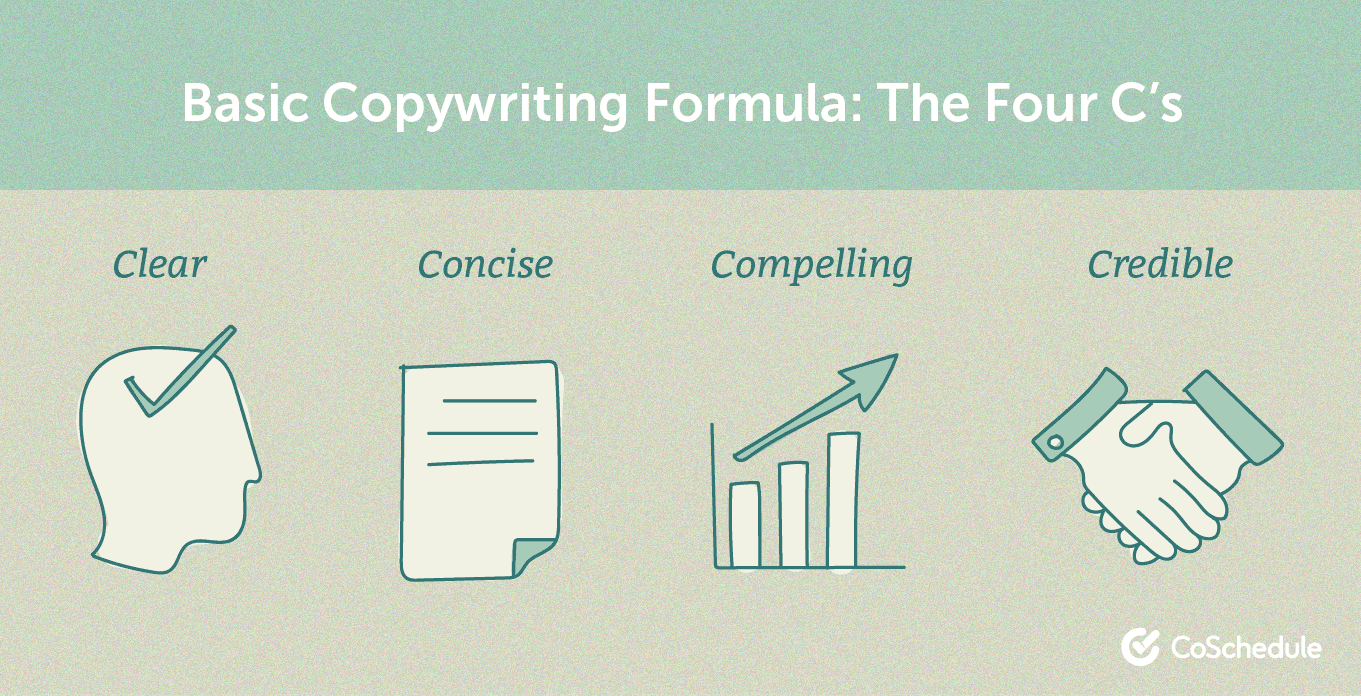 The tweet below, by Buffer’s VP of Marketing, is an excellent example of the four C's in action.
The tweet below, by Buffer’s VP of Marketing, is an excellent example of the four C's in action.
 Seriously, nobody has the time to read a long copy — it is tedious, and your audience will soon lose interest. Moreover, use simple words, short sentences, and shorter paragraphs to get to the point.
Never use jargon, slang, and fancy words that attract attention but diverts the readers from what action you want them to take. This should be applicable no matter where you are in the sales funnel.
In other words, when writing anything, simplicity and brevity are key. That said, brevity doesn’t mean you leave out relevant information. Keep your copy as short as possible, but also as long as necessary.
Seriously, nobody has the time to read a long copy — it is tedious, and your audience will soon lose interest. Moreover, use simple words, short sentences, and shorter paragraphs to get to the point.
Never use jargon, slang, and fancy words that attract attention but diverts the readers from what action you want them to take. This should be applicable no matter where you are in the sales funnel.
In other words, when writing anything, simplicity and brevity are key. That said, brevity doesn’t mean you leave out relevant information. Keep your copy as short as possible, but also as long as necessary.
Skill #3: An Understanding of How to Conduct and Interpret Customer Research
At the heart of every marketing campaign is — you guessed it — your customers (potential and existing). The job of a content strategist includes coming up with buyer personas, understanding the pain points of the target audience, and planning what content to put out and when. As a marketer who writes words meant to convince people to do something, you must be able to conduct and interpret customer research yourself.Skill #4: The Ability to Do Deep, Topical Research
While on the subject of research, it is not just limited to learning everything about the customers, but also about fully understanding the product or service you’re marketing. For instance, you’re working with a new client in a completely new vertical (say, small business VoIP systems) about which you know next to nothing. Instead of leaving it to your team to figure everything out about the product and explain it to you, wear your detective hat, and make it your goal to research and learn the heck out of that new topic. After all, whatever content you produce (e.g. a long-form guide, a whitepaper, a how-to video, etc.) will only be as effective as your level of understanding and research on the topic. Dig deep into Google to hunt the best existing content on that topic, learn from it, and make it 10x better for your client.Skill #5: Ability to Simplify Complex Information
Yes, this skill was already touched upon earlier. Still, it’s worth mentioning again — no matter the topic or industry in which you’re creating marketing content, make sure to convey your points in the most straightforward language possible. As Einstein famously said, “If you can't explain it simply, you don't understand it well enough,” a statement so very true, not just for scientific and technical fields, but also marketing. The two aforementioned research skills are crucial for this purpose. Combine those with a strong focus on brevity and clarity, and you have content that people would look forward to. The best copywriters can simplify complex information without dumbing stuff down or leaving out anything valuable. For example, eachnight’s blog does an excellent job of supplementing their articles with easy-to-understand statistics for the layman. Targeting entrepreneurs, but tackling the niche topic of sleep and productivity, they fine-tune their content in line with the audience’s reading level and expertise.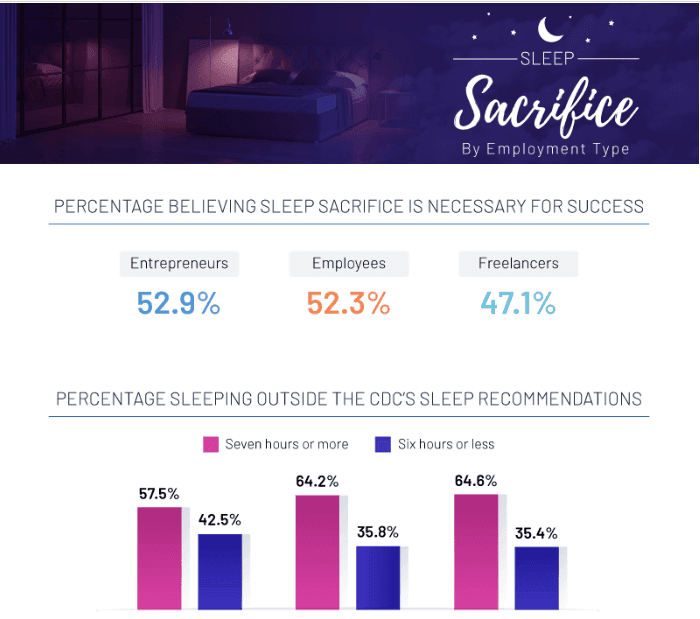 Even if you know your campaign’s audience is savvy enough to understand any jargon, your message will be far more effective if it’s easier to digest — using simple words and scannable bullet points. Thus, simplifying complex content is a skill you need to develop as a marketer.
Even if you know your campaign’s audience is savvy enough to understand any jargon, your message will be far more effective if it’s easier to digest — using simple words and scannable bullet points. Thus, simplifying complex content is a skill you need to develop as a marketer.
Skill #6: Understanding of How to Separate Features From Benefits
Take a moment and think about your last few marketing campaigns. Go through some of the emails you sent in your launch campaigns, or marketing posts on social media promoting your brand-new product or service. Now, evaluate how much of this content focused on what your product does, instead of conveying why it’s indispensable for your audience. When it comes to marketing anything, you can take two approaches. The first focuses on what your product or service is or does — talking about all the fancy features you’ve worked arduously to build. The other focuses on how your product or service will improve customers’ lives.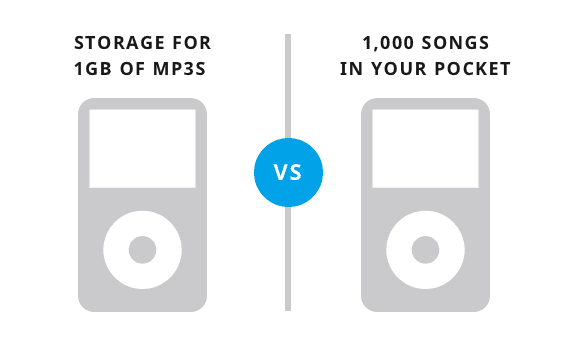 Understandably, it can sometimes be tricky to tell the difference between the two, as many features may initially sound like benefits.
For instance, promoting the fact that a smartphone has a super-fast internet connection is showcasing a feature, not a benefit. A benefit of fast internet would be the ability to stream 4k videos instantly.
While having clearly listed features are essential, the most significant between features and benefits is that the latter affects on an emotional level and resonates with the audience.
Understandably, it can sometimes be tricky to tell the difference between the two, as many features may initially sound like benefits.
For instance, promoting the fact that a smartphone has a super-fast internet connection is showcasing a feature, not a benefit. A benefit of fast internet would be the ability to stream 4k videos instantly.
While having clearly listed features are essential, the most significant between features and benefits is that the latter affects on an emotional level and resonates with the audience.
Know the difference between features and benefits of your product.
Click To TweetSkill #7: Measurement and Analytics Skills to Prove Your Copy is Working
Sure, you may feel that copywriting is mostly a creative art that has nothing to do with numbers or analytical skills. Quite unarguably, effective marketing is a blend of creativity and analytics. Once your content is out there on the internet, a useful analytics tool (e.g. Google Analytics) gives you a decent idea of how the audience responds and overall engagement levels. The ability to use analytics to check how the content performs in terms of absolute numbers, enables you to create valuable experiments that can help identify how the audience is responding. Metrics, such as click-through rate, bounce rate, and engagement in the form of comments and social shares, are crucial to not just prove that your copy is working, but also to continually improve it. Pro-tip: The larger amounts of data that you manage, the more difficult it may be to mine valuable insights. Consider leveraging big data to extract the in-depth information you want in this regard. You can use analytics to show clients and employers your success, results, and credibility. At the same time, the data about your copy will help you find its problem areas and opportunities to double down on, thus helping you bring in better business results. You’ll be deemed a great marketer not because your content is creative, but because it boosted sales for a client by 30%, or because your brilliantly-worded newsletters helped a new publisher grow their email subscriber list from 1,000 to 10,000 subscribers in two months — something that you can only prove if you have a good grasp of email marketing analytics. In the end, it doesn’t matter how creative or clever you think your writing is. If you can’t show exactly how and why it’s successful, you don’t really know what you’re doing and how you can improve.Skill #8: Basic Understanding of UX
If you’re writing copy for websites or web/mobile apps, an understanding of what constitutes great user experience (UX) is vital. The days when UX was considered as an area that only concerns designers are gone. Creating a pleasant and memorable online experience for your audience is now crucial to achieving business goals, which makes UX a priority for not just designers but also marketers. Here’s what the experts say about the importance of UX in marketing:- “UX is a qualitative foundation for all marketing. If we’re not focused on helping users make good decisions to overcome challenges and accomplish their goals, what’s the point?” says Angie Schottmuller, a renowned growth marketing advisor and keynote speaker.
- “UX determines the success of marketing. No matter how much you invest in promotion, you’ll fail if your product, site, or app is impossible or hard to use,” says Ann Smarty, brand and community manager at Internet Marketing Ninjas.
- According to Lauren Ventura, a senior copywriter at 41 Orange, UX is “about holistically listening to your customers, and writing for them — not your brand per se, as the best brands are driven by their core customers.”
 With an understanding of UX writing, you’ll be better equipped to create content that’s clear, crisp yet comprehensive, well-researched, engaging, readable, personable, search-engine friendly, and grammatically and factually accurate — in other words, high-quality content that builds your client’s credibility and thought leadership.
You’ll also be able to write better microcopy, call-to-actions, and headlines (discussed later). Talking about search-engine friendliness, as a marketer who writes, a basic understanding of UX goes hand-in-hand with...
With an understanding of UX writing, you’ll be better equipped to create content that’s clear, crisp yet comprehensive, well-researched, engaging, readable, personable, search-engine friendly, and grammatically and factually accurate — in other words, high-quality content that builds your client’s credibility and thought leadership.
You’ll also be able to write better microcopy, call-to-actions, and headlines (discussed later). Talking about search-engine friendliness, as a marketer who writes, a basic understanding of UX goes hand-in-hand with...
Skill #9: Working Knowledge of SEO
Let’s face it: if you’re working on online content creation and marketing, you’re also dealing with search engine optimization (SEO). A major part of nearly every holistic organic marketing strategy is about optimizing for search. Now, modern SEO is not just about satisfying Google’s crawlers, but about delivering top-notch UX. And as just discussed, good UX is closely related to the quality of content you publish. Again, copywriters aren’t required to understand the ins and outs of SEO, but as a marketer, it’s essential to have at least a working knowledge of SEO. That’s because better SEO means more traffic, leads, and conversions, which is the point of writing copy. Be it a long-form blog post or a homepage copy, a hands-on understanding of keyword research and inclusion, internal and external linking, title tags and meta description, user intent behind the search, and other on-page SEO elements is a must for every marketer today. Likewise, solid know-how of the type of copy — crisp, to-the-point, and value-driven — that goes into successful cold emails for guest posting or blogger outreach (aka off-page SEO), is just as important for modern marketers.
Likewise, solid know-how of the type of copy — crisp, to-the-point, and value-driven — that goes into successful cold emails for guest posting or blogger outreach (aka off-page SEO), is just as important for modern marketers.
Keyword research is about matching user intent to their desired solution.
Click To TweetSkill #10: Ability to Write Headlines
“On average, five times as many people read the headline as read the body copy. When you have written your headline, you have spent eighty cents out of your dollar,” said David Ogilvy, the British advertising tycoon. He could not be more right. According to Copyblogger, on average, eight out of 10 people will read headline copy, but only two out of 10 will read the rest. For web pages, heat maps usually indicate that people pay attention to headlines and visuals over the actual content. To get conversions, you must first attract attention, and the headline is what your audience sees first. Thus, a critical copywriting skill you must master as a marketer is the ability to write a clear, catchy headline that sucks people in like a moth to a flame. If your headline isn’t powerful, your content may never be consumed. Master the art of writing captivating headlines. Examine the most successful headline types — ones with numbers usually have the best CTRs and social shares, as shown below. Keep testing different types of headlines (such as “how-tos”) with varying numbers of words and tone (positive or negative), as preferences may vary based on your niche.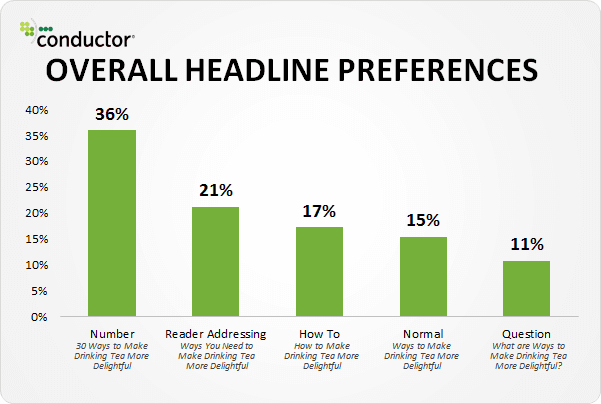 An easy way to come up with powerful headlines is to use the Headline Analyzer Studio tool which analyzes your title for various factors such as type of words used and character count, and then grades your headline based on their emotional value, so you can tweak it to improve social shares and click-throughs.
An easy way to come up with powerful headlines is to use the Headline Analyzer Studio tool which analyzes your title for various factors such as type of words used and character count, and then grades your headline based on their emotional value, so you can tweak it to improve social shares and click-throughs.
Skill #11: Strong Understanding of the Marketing Funnel
As a marketer, you’re aware of the marketing funnel — the journey that potential customers go through on the way to purchase. For a typical customer, the journey is a five-step process, followed by a purchase, as shown below.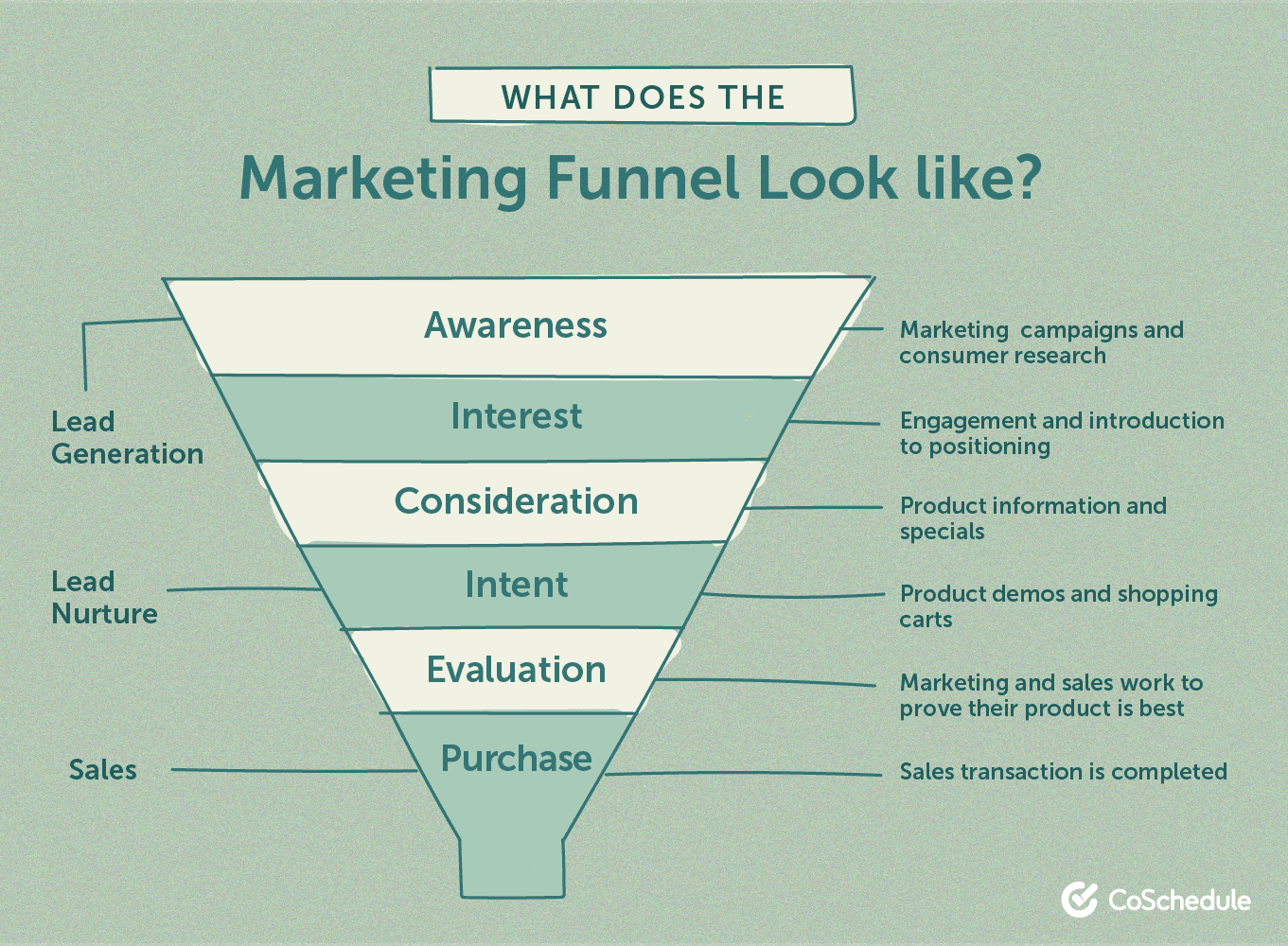 During each stage of the funnel, the customer’s motivations, relationship with your business, and emotions change.
Compelling marketing funnel copywriting will use language that sparks a positive response in the reader, in accordance with their position in the funnel, to keep them moving toward the purchase.
Now, with the exception of writing copy for PPC ads on Google (discussed later), copywriting skills come into play around the middle-to-bottom part of the funnel, wherein you want people to click on a call-to-action, such as to sign up for a newsletter or a free trial after reading a blog post, or to create a high-converting landing page, which turns visitors into leads.
During each stage of the funnel, the customer’s motivations, relationship with your business, and emotions change.
Compelling marketing funnel copywriting will use language that sparks a positive response in the reader, in accordance with their position in the funnel, to keep them moving toward the purchase.
Now, with the exception of writing copy for PPC ads on Google (discussed later), copywriting skills come into play around the middle-to-bottom part of the funnel, wherein you want people to click on a call-to-action, such as to sign up for a newsletter or a free trial after reading a blog post, or to create a high-converting landing page, which turns visitors into leads.
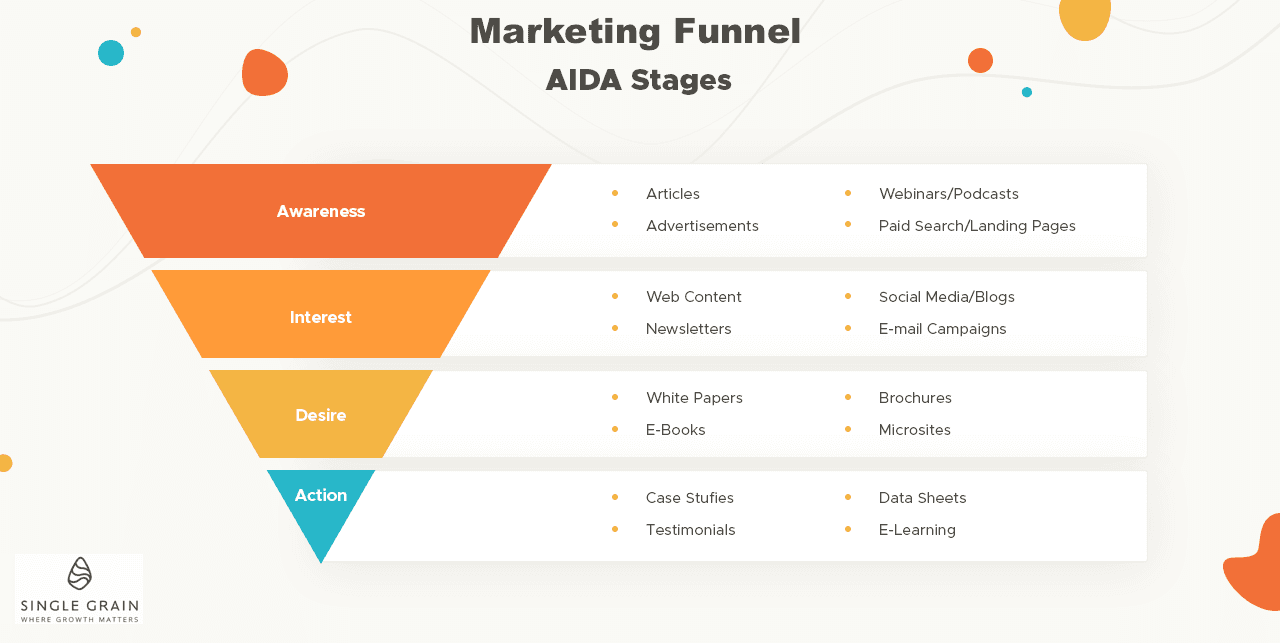 Being a marketer, you need to understand at which stage of the funnel what type of content or copy is required.
Only then will you be able to tailor your writing to the different audience emotions and intents at various stages, switching from long-form educational content and storytelling at the top-of-the-funnel to direct-response landing page copy, case studies, and customer support messaging at the bottom-of-the-funnel.
Being a marketer, you need to understand at which stage of the funnel what type of content or copy is required.
Only then will you be able to tailor your writing to the different audience emotions and intents at various stages, switching from long-form educational content and storytelling at the top-of-the-funnel to direct-response landing page copy, case studies, and customer support messaging at the bottom-of-the-funnel.
Skill #12: Ability to Not Just Write Well, but to Write Persuasively
In essence, a copywriter’s job is to write words that compel people to take a desirable action, ultimately translating into more revenue for the business. Persuasive writing is the core skill of a copywriter, and you’ll need a bite of that skill if you wish to be the crème de la crème of marketers. High-quality, persuasive copy is a blend of thorough research and careful word choice to present the writer’s opinion powerfully and get the reader to agree.High-quality, persuasive copy is a blend of thorough research and careful word choice.
Click To Tweet- Being specific: Using super-specific headlines for blog posts and email subjects, such as by inserting “too-specific-to-be-fake” statistics (57.34% instead of 57%), increase the authority of the content and thus, click-throughs.
- Leveraging social proof: 76% of consumers trust online reviews as much as recommendations from family and friends. So leveraging social proof in the form of reviews, testimonials, and social media shoutouts is a highly effective way to reassure readers that your business is trustworthy.
- Creating FOMO: Whenever possible, develop a sense of urgency or scarcity in your readers. For example, in e-commerce stores, seeing things like “Only X items left” or “Offer ends in X days”, or on an attractive offer that others are taking benefit of can nudge shoppers on the fence into clicking that “Buy Now” button.
Skill #13: Ability to Write for Different Formats
The best copywriters can write compelling copy for just about any product/service and in any format. Being a marketer, you’re likely working with a variety of content formats yourself, such as:- Landing Pages
- Blog Posts
- PPC Ads
- Social Media Ads
- Video
 The ad above manages to stimulate a positive emotional response by using sanguine language to lure prospects to click.
This type of ad may have been well-suited to a negative emotional trigger, such as fear or insecurities. Still, the brand has adroitly chosen a more inspirational approach to a sensitive topic — body image — to drive the point home.
Similarly, you must understand the nuances of writing for other marketing channels like email and social media in order to get people to actually listen to you.
The ad above manages to stimulate a positive emotional response by using sanguine language to lure prospects to click.
This type of ad may have been well-suited to a negative emotional trigger, such as fear or insecurities. Still, the brand has adroitly chosen a more inspirational approach to a sensitive topic — body image — to drive the point home.
Similarly, you must understand the nuances of writing for other marketing channels like email and social media in order to get people to actually listen to you.
Skill #14: Ability to Make Ordinary Things Sound Interesting to the Reader
Let’s face it: being a marketer often means creating content about boring industries, such as the dental or insurance industry, or somewhat technical subjects, such as big data analytics. Maintaining creativity for campaigns of such clients can be tricky at times, but it’s a skill you must learn. Otherwise, you risk creating sub-par content that does nothing to advance your client’s online growth and may even be counterproductive for their reputation. After all, “There are no dull products, only dull writers,” according to Mr. Ogilvy. While you may be writing for a product/service that isn’t necessarily “sexy”, that doesn’t mean the copy can’t be interesting. In fact, you can make the most mundane things sound interesting to the reader and keep them hooked to your content by doing the following:- Capture the reader’s attention right off the bat. Depending on the topic or product you’re marketing, you can start your copy with an intriguing question, startling statistics, an outrageous claim, or even an amusing anecdote.
- Put yourself in the reader’s shoes. What are they looking for from this content? How can you provide more useful answers to their questions? Answering questions from their perspective is one of the most effective ways to make ordinary things sound interesting.
- Use a metaphor. If you can’t find a way to make a topic interesting, consider likening it to something that is. Tie a dry topic to something more exciting or unique to help your readers resonate better with the subject matter.



